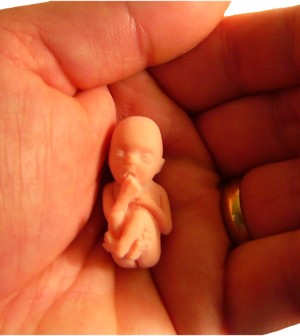- Skip Storing This Everyday Product in the Fridge Door
- Green Tea + B3 Pairing May Boost Brain Health
- Navigating Your Midlife Crisis: Embracing New Possibilities
- City Raccoons Showing Signs of Domestication
- Mapping the Exposome: Science Broadens Focus to Environmental Disease Triggers
- One Week Less on Social Media Linked to Better Mental Health
- Your Brain Changes in Stages as You Age, Study Finds
- Some Suicide Victims Show No Typical Warning Signs, Study Finds
- ByHeart Formula Faces Lawsuits After Babies Sickened With Botulism
- Switch to Vegan Diet Could Cut Your Greenhouse Gas Emissions in Half
Delay in Clamping Umbilical Cord Benefits Babies, Doctors Say

The American College of Obstetricians and Gynecologists (ACOG) recommends waiting at least 30 to 60 seconds after birth to clamp a healthy newborn’s umbilical cord, citing potential health benefits.
The new guideline is a change from 2012, when ACOG expressed uncertainty about the value of delaying clamping. The group now says research suggests healthy infants can benefit from getting more blood from the placenta through the umbilical cord.
“While there are various recommendations regarding optimal timing for delayed umbilical cord clamping, there has been increased evidence that shows that the practice in and of itself has clear health benefits for both preterm and term infants,” Dr. Maria Mascola, lead author of the guidelines, said in an ACOG news release.
“And, in most cases, this does not interfere with early care, including drying and stimulating for the first breath and immediate skin-to-skin contact,” she added.
A full-term pregnancy is one that lasts 39 weeks to 40 weeks. Preterm is used to describe a baby born before 37 weeks of gestation.
Delayed cord clamping can boost levels of hemoglobin in the blood and help prevent iron deficiency during the baby’s first year of life, potentially staving off developmental problems, the doctors’ group said.
Although delayed clamping increases the newborn’s risk of jaundice that will require treatment, ACOG said there’s no evidence that waiting increases the mother’s risk of hemorrhage.
The guidelines are to be published in the January issue of Obstetrics and Gynecology.
More information
For more about umbilical cords, visit the U.S. National Library of Medicine.
Source: HealthDay
Copyright © 2025 HealthDay. All rights reserved.










